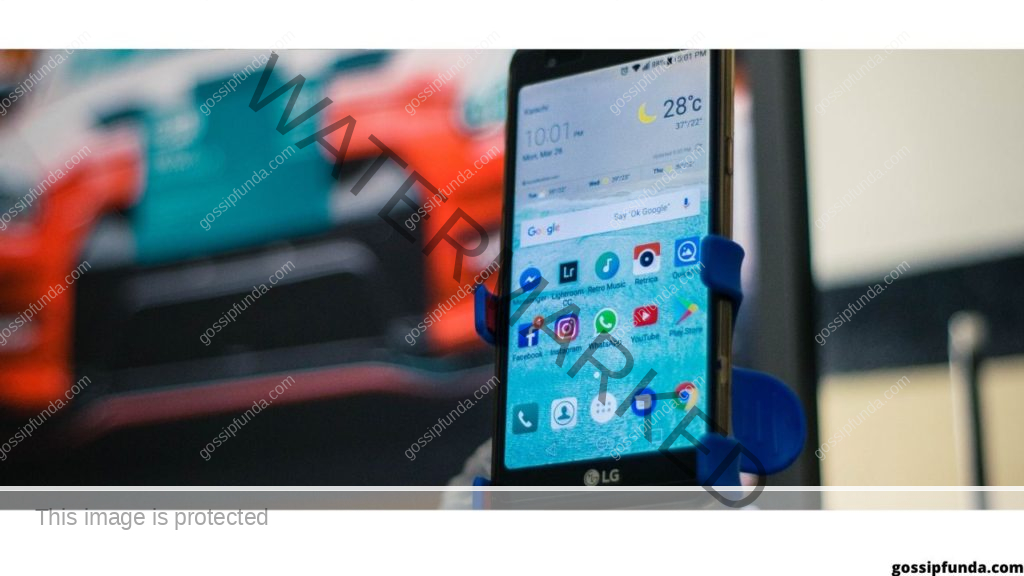Concerns about data security and privacy are at an all-time high in the modern digital era. Being aware of potential risks to our personal information is more crucial than ever given the growing role that technology plays in our everyday lives. One such worry that some computer consumers now have is whether or not their devices have spyware or other harmful software. In this situation,” LG IMS Spyware” has drawn criticism, and some users have questioned whether it is spyware or not.
What is LG IMS?
LG IP Multimedia Subsystem is referred to as LG IMS. It is a framework that is essential for enabling Wi-Fi calling and voice-over long-term evolution (VoLTE) for LG devices. Despite being associated with LG, this framework can also be found on products made by other manufacturers in addition to LG.
The worries that LG IMS is spyware are probably the result of a lack of knowledge about what it is and what it accomplishes. An unknown program on a person’s smartphone can undoubtedly arouse suspicions at first glance. Nonetheless, it’s crucial to rely on facts and evidence when making decisions rather than conjecture.

We shall delve more into the nature of LG IMS in this essay. We will go through its function and purpose as well as whether or not it is spyware. Also, We hope that our investigation will help readers better understand LG IMS and how it functions on their devices.
With the help of the LG IMS, also known as the LG IP Multimedia Subsystem, services like voice-over long-term evolution (VoLTE) and Wi-Fi calling are made possible on LG devices. Although it is connected to LG, this framework is not only found in LG products; it is also present in products made by other manufacturers.
By using VoLTE, voice calls can be placed via a 4G LTE network rather than a conventional voice network. Faster call setup times and better voice calls are the results of this. In regions with inadequate cellular service, wi-fi calling enables users to place and receive calls through a Wi-Fi network instead of a cellular network.
VoLTE and Wi-Fi calling services are delivered more easily thanks to LG IMS, which serves as a middleman between the device and the network. These services wouldn’t be available on LG handsets without LG IMS.
It’s significant to remember that LG IMS isn’t a user-interactive app. Instead, it is a system-level framework that works silently in the background to make some services on the device available. Users do not need to actively manage or monitor it as a result.
What is the LG IMS and what does it do?
LG IP Multimedia Subsystem is referred to as LG IMS. It is a framework that is essential for enabling Wi-Fi calling and voice-over long-term evolution (VoLTE) for LG devices. Despite being associated with LG, this framework can also be found on products made by other manufacturers in addition to LG. The technology known as VoLTE, or Voice over Long-Term Evolution, enables voice calls to be placed over a 4G LTE network as opposed to a standard voice network. Faster call setup times and better voice calls are the results of this.
Wi-Fi calling, on the other hand, enables customers to place and receive calls over a Wi-Fi network as opposed to a cellular8network. This may be especially helpful where cell phone coverage is spotty. These services are made possible on LG handsets in large part thanks to LG IMS. It functions as a go-between for the network and the device, enabling the transmission of VoLTE and Wi-Fi calling services. These services wouldn’t be available without LG IMS.
Describe its operation and function in providing services like VoLTE and Wi-Fi calling.
With the help of the LG IMS, also known as the LG IP Multimedia Subsystem, services like voice-over long-term evolution (VoLTE) and Wi-Fi calling are made possible on LG devices. Although it is connected to LG, this framework is not only found in LG products; it is also present in products made by other manufacturers. By using VoLTE, voice calls can be placed via a 4G LTE network rather than a conventional voice network. Faster call setup times and better voice calls are the results of this. In regions with inadequate cellular service, wi-fi calling enables users to place and receive calls through a Wi-Fi network instead of a cellular network. VoLTE and Wi-Fi calling services are delivered more easily thanks to LG IMS, which serves as a middleman between the device and the network.
To create the necessary connections and to transmit transmission between the device and the network, it talks with the network. These services would only be available on LG handsets with LG IMS. It’s vital to remember that LG IMS is a system-level application and does not allow for direct user interaction. Instead, it operates in the background to make some services available on the device. Users do not need to actively manage or monitor it as a result.
Many falsehoods regarding the LG IMS
It should be highlighted that the framework is not malware despite various misconceptions regarding LG IMS being spyware or malware. There is no unauthorized data transmission to outside parties using Wi-Fi calling or other IP multimedia features. Issues with LG IMS, including high battery drain and location turning on automatically, have been observed by certain customers. Yet these are fundamental problems with how the framework functions, not with the framework itself. People might assume an app is depleting the power if they find IMS (com.lge.ims) among the top energy-hogging apps. Yet, in reality, it can be because you usually use your phone for VoLTE or Wi-Fi calling. Similar to how IMS can locate you using GPS and use that information for uninterrupted Wi-Fi calling, IMS may also automatically enable certain services.
Conclusion
Voice-over long-term evolution (VoLTE) and Wi-Fi calling are two crucial services that are delivered by the LG IMS (IP Multimedia Subsystem). This framework is also available from other device manufacturers, not just LG. Notwithstanding some erroneous claims that LG IMS is spyware or malware, it should be underlined that neither the framework nor employing the results of its services in the transmission of unauthorized data to third parties.
Issues with LG IMS, including high battery drain and location turning on automatically, have been observed by certain customers. Yet these are fundamental problems with how the framework functions, not with the framework itself. For instance, low battery life may be caused by using the phone primarily for VoLTE or Wi-Fi calling, and an automatic location setting may be caused by the IMS service turning on various services like GPS to locate you and using that information for uninterrupted Wi-Fi calling.
LG IMS is not spyware or malware, but rather a framework that offers crucial features like VoLTE and Wi-Fi calling. Although some users might have complained about problems with it, these aren’t problems with the framework per se but rather with how it functions. Understanding LG IMS’s genuine function is crucial to avoid believing the myth that it is malware.
I am a technical author with over many years of experience in writing technical documentation for a variety of industries, including software, hardware, and telecommunications. With a background in Science and Technology, I have a deep understanding of technical concepts and is able to communicate them clearly and concisely for both technical and non-technical audiences.


